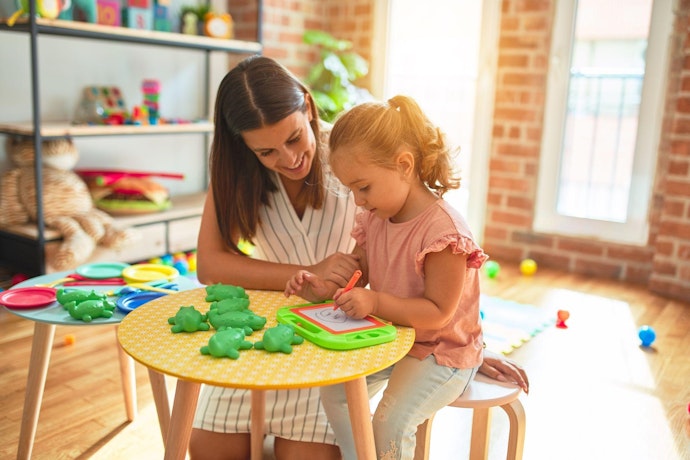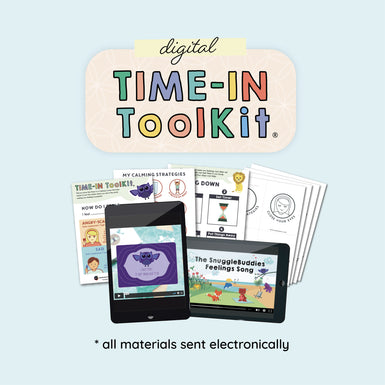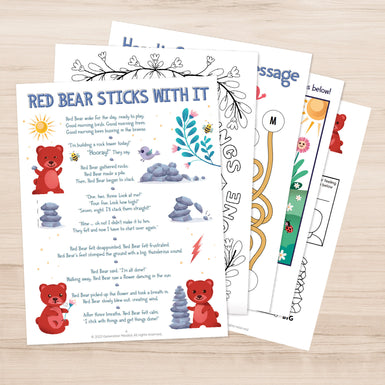Your toddler is in the midst of a full-blown tantrum, their toys scattered around as they protest your decision to curtail their TV time. This familiar scene might resonate with you as a care provider.
Like many parents, you might have employed the classic tactic of guiding your little one to a designated time-out chair, a space intended for them to collect their emotions.
Yet, this traditional discipline method might lead you into further power struggles, particularly when dealing with a sensitive or strong-willed child, prompting you to impose time-outs even more forcefully and straining your parent-child relationship.
This is where understanding the contemporary concept of "time-in" is extremely helpful, injecting the elements of empathy and connection into the realm of discipline. Instead of isolating children, this method focuses on fostering understanding, skill-building, and communication.
Join us in delving into the synergy between the conventional time-out chair and the innovative time-in technique.
The Disciplinary Concept of Time-Out Chair
The concept of the time-out chair has been a commonly used strategy to address children's challenging behaviors since the 1960s. It involves placing a child in a designated space to reflect on their actions and, ideally, improve their behavior.
While this technique may show some success in reducing negative behaviors, it's important to recognize its potential drawbacks. Isolating a child in this manner can inadvertently damage their emotional well-being. Extended periods of solitary confinement can strain the emotional connection between parent and child, leading to feelings of isolation and detachment.
It's worth considering whether using a time-out genuinely fosters self-reflection and growth, or if it merely temporarily suppresses big emotions from children.
The traditional time-out chair's main limitation becomes evident when we examine its emotional aftermath. Young children generally receive no guidance during a time-out other than to "Sit still, be quiet, and think about what you did". Following this brief pause, these children generally return to their original state without understanding their emotions or learning effective ways to manage them.
Reinventing Discipline with the Time-In Technique
In the quest for a healthier, evidence-based, responsive, child-centered approach, the time-in technique emerges as a modern enhancement to the traditional time-out concept. This approach pivots on a fundamental principle: maintaining connection during times of discipline and seeing unwanted behaviors for the unmet needs they represent.
The time-in technique acknowledges that behavior is a symptom, not the problem. And when we focus solely on the symptoms, the problems causing these behaviors remain unsolved and stack up. Positive discipline is not just about changing actions; it's about meeting children's emotional needs, fostering emotional intelligence, and nurturing a strong parent-child bond.
When practicing the time-in technique, you use empathy and understanding to help your child sort through their emotions. To successfully use this technique in your home or classroom, follow these steps:
1. Recognize Behavioral Triggers
The first step towards effective discipline, whether through time-out or time-in, is recognizing the underlying triggers. These triggers can range from fatigue and hunger to unmet emotional needs. By identifying the root cause of the upset and/or acting out, you gain a more profound insight into your child's actions and can then choose the most appropriate next step.
2. Reimagine the Time-Out Chair
If you think back to the last time you might have been tempted to send your child to take a classic time-out in a corner or chair, beyond you being upset and wanting to punish your child, it is likely that your little one could have benefited from a brief break from an emotionally charged situation. And here is the big difference between time-ins and time-outs...
The key to creating a pause that invites a child to learn things like emotional regulation and self-awareness comes when you reimagine the time-out as a teaching moment rather than a punishment—an opportunity for connection, reflection, regulation, and regrouping.
This is what mental health professionals and child development experts call a "time-in".
3. Create Emotional Connection with Time-In
Instead of sending your kid off to a solitary corner, engage in a time-in that teaches the child while maintaining connection. Time-ins foster emotional development by creating an environment where the child understands their boundaries, and can feel safe sharing their thoughts and feelings. This environment encourages open communication and a deeper understanding of the thoughts and feelings that inform behaviors.
4. Harness The Power of Active Listening
As caregivers, we often see our children as a reflection or extension of ourselves. This perspective can lead to parental pressure, enabling us to ignore what our kids are feeling at the moment.
To break this damaging cycle, you can embrace active listening to validate your child's feelings and help them recognize that their emotions are acknowledged and valued. In contrast, traditional time-out lacks this essential element of communication,
missing the chance to address the emotional undercurrents truly.
5. Use Collaborative Problem-Solving
The time-in approach empowers your child to be an active participant in their behavior modification journey. It provides them with a safe environment to have an open conversation without external distractions.
To resolve the underlying issue, you validate their emotions without judgment, identify the problem, and brainstorm to generate possible solutions. With these activities, you nurture your child's sense of responsibility and teach them essential conflict-resolution skills.
Design A Calming Corner and Use Positive Discipline with The Time-In ToolKit
Discipline isn't a one-size-fits-all approach, and even if you have used punitive discipline methods in the past, you are likely clear that you can benefit from having added methods in your parenting toolkit. Isolating young children during a situation of heightened emotions can fester negative feelings, and strain the sense of safety a child feels with that care provider, which is vital to their future health and wellbeing.
To discipline children in a way that also helps them understand and share their feelings, you can evolve your use of the time-out chair into time-ins.
This brain-based method for disciplining children not only nurtures emotional intelligence but strengthens the parent-child relationship, paving the way to more constructive behaviors from the child in the future.
The Time-In Toolkit is a step-by-step guided approach to using positive discipline and will help you create a dedicated space for time-in sessions.
Join the Generation Mindful community today for more valuable resources, discussions, and insights for navigating the complexities of parenting with mindfulness and empathy.
_____________________________________________________________________


















